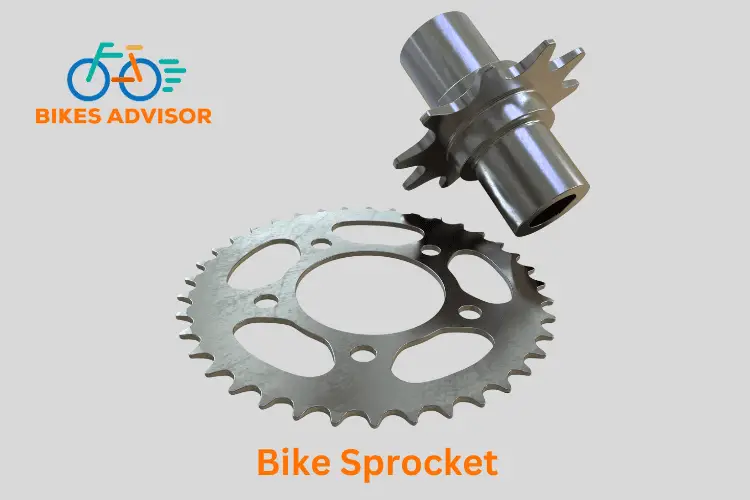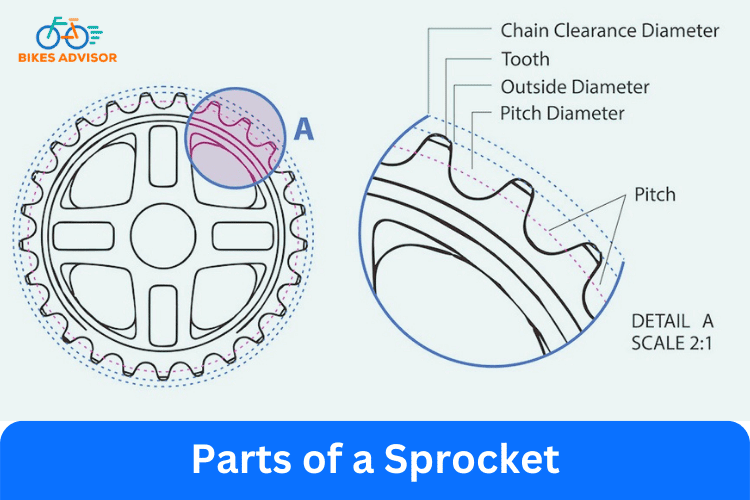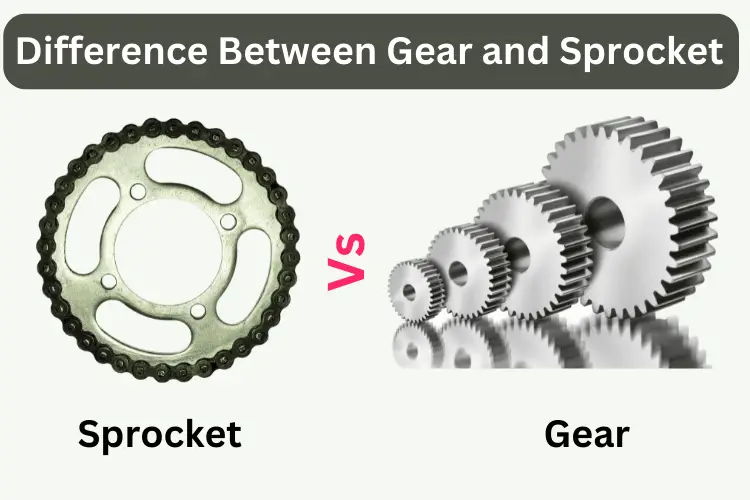A sprocket is a mechanical wheel with teeth or tiny notches which rotate and engage with the chain or belt of a bike.
The sprocket is an essential component of your bike, which function with pedaling system.
In this article, we’ll discuss in detail guide on the sprocket types and functionalities.
We’ll also see the selection guide for a chain sprocket and the difference between a gear and a sprocket.
So please, stay tuned for more information as it becomes available.
Quick Navigation
Sprocket On A Bike
A bike sprocket is important for motorcycles, tracked vehicles, and bicycles. It’s a metal object for accelerating motion from the bike pedal to the chain and wheels.

A bicycle consists of two sprockets called the front and rear. Usually, the front sprocket is bigger than the rear sprocket.
The pedal shafts come with a front sprocket wheel to enforce the motion of a small sprocket.
The sprocket comes in various sizes, designs, and the number of teeth depending on bike type and speed requirements.
The standard diameter of a sprocket is 12 mm for a regular bicycle with 11 to 12 teeth. On the other hand, a sprocket can have up to 32 teeth for a larger bike.
Parts of a Sprocket
There are various parts/sections of a sprocket as listed below:

- Number of Teeth: The total number of teeth found on a sprocket. For a regular bike, a sprocket can have 11 to 12 teeth. On the other hand, for a larger bicycle, the number of teeth can have up to 21 to 32.
- Pitch Diameter: Pitch diameter is the circumference of the sprocket. It is found at the inner point between the teeth where the chain meets the sprocket.
- Outside Diameter: The circumference around the sprocket at the end tips of the teeth.
- Pitch: It is the total measurement per tooth represented in inches. It needs to fit the pitch between the pins on a chain.
Different Types of Sprockets
The sprockets come in different shapes and sizes. Also, the number of teeth of a sprocket varies.
We have listed below some of the standard types:
- Double duty – In double-duty sprocket has two teeth per pitch. The links can be advanced to the new set of teeth when 1st set is worn down.
- Hunting Teeth – It has an uneven number of teeth. So, it tends to last longer than another set.
- Segmental Rim – It has three or four, even sometimes more, pieces of bolt-on rims. The rim can replace without removing the chain. It uses for an elevator or industrial setting to reduce cost.
- Multiple Strand – This type is used where more torque and power are needed or if the same drive shaft is powering two or more items.
- Quick disconnect (QD) – QD is used for higher working loads, and some feature a reverse mounting function.
- Idler – The chains can slack or be guided around obstructions to prevent whipping. In addition, it prevents uneven load distribution.
How Do Sprockets Work?
A sprocket works by transferring power via chain or belt.
Two sprockets are connected by a chain or belt. One sprocket, usually the larger one, serves as the “driver” and the other, often smaller is the “driven.”
A force driving them results in a transmission of power, a change in torque, or a change in speed inside a mechanical system.
Sprockets with a greater number of teeth can transfer greater weight.
However, this comes at the cost of increased friction. This results in a slower overall operating speed.
What Are the Purpose of Sprockets?
A sprocket’s purpose is to transfer rotary power between two shafts. It is especially useful when a gear would be ineffective.

Any wheel with radial projections that engage a chain traveling over it is called a sprocket.
They are seen in bicycles, motorcycles, tracked vehicles, and other machinery. They can also impart linear motion to a track.
Selecting A Sprocket For A Chain
Simplex, Duplex, and Triplex sprockets have 1, 2, or 3 rows of teeth.
The most prevalent kind, Simplex, accounts for around 70% of market applications, followed by Duplex at about 25% and Triplex at 5%.
Norms and Chain Dimensions
The two most popular chain standards available on the market are:
- European Standard, also called British Standard.
- American Standard
Frequently, the sizes will be followed by a hyphen and a number between 1 and 3. This indicates how many strands are required for that specific chain.
The size must then be chosen to calculate the force ratio.
How To Determine the Sprocket Ratio
This is the driving sprocket’s tooth count divided by the driven sprocket’s tooth count.
For instance, a front sprocket with 20 teeth and a rear sprocket with 60 teeth have a sprocket ratio of 20/60, which is ⅓ or 1:3.
| British Standard (BS) | 04B | 05B | 06B | 08B | 10B | 12B | 16B | 20B | 24B | 28B | ||||
| American Standard (ANSI) | 25 | 35 | 41 | 40 | 50 | 60 | 80 | 100 | 120 | 140 | 160 | 180 | 200 | 240 |
Difference Between a Gear and a Sprocket?
Here are some of the differences between gear and sprocket.

| Gear | Sprocket |
|---|---|
| The teeth of two gears mesh and engage with one another. | Their teeth are designed to slide into the gaps of a chain or belt. |
| Motion along any axis can be transmitted via the gear. | The sprocket can only transmit and move along a parallel axis. |
| The torque that is transmitted goes in the opposite direction. | Torque is transmitted in the same direction as the input |
| In most cases, the correct transmission of power requires the combination of several gears into a single-gear system. | They typically consist of two sprockets and a chain, similar to what is found in a bicycle. |
| If one of its teeth were to become destroyed, a gear would still work. However, the overall efficiency would decrease. | If the teeth of the sprocket are damaged in any way, the system becomes inoperable. |
| Gears are an essential component of virtually every mechanical system, including motors, cars, and many others. | Other than on bicycles, the most prevalent application for a sprocket is in tracked vehicles like tanks and bulldozers. |
Frequently Asked Questions (FAQ)
Conclusion
Like we have discussed, a sprocket is a very important clever piece of technology.
It allows you to convert the energy from your thighs to the forward motion of your bike.
So when next you ride your bike, be sure to appreciate the humble sprockets that make it move.

1 thought on “What is a Sprocket on a Bike? (Complete Sprocket Guide)”